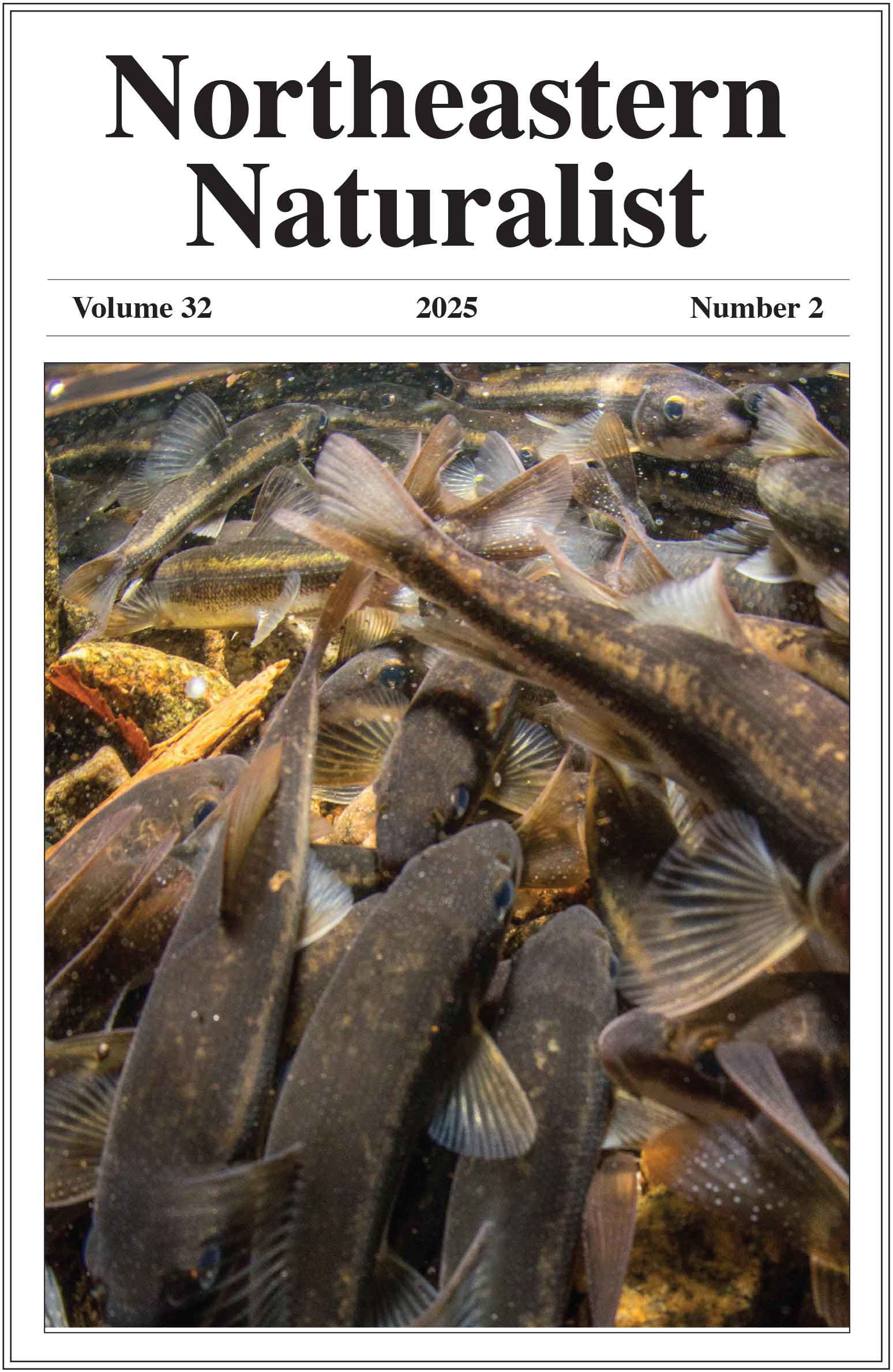Fishes of Northern New York and the Adirondacks
Douglas M. Carlson1,* and Jane E. Carlson2
144 Pierrepont Avenue, Biology Department, SUNY Potsdam, Potsdam, NY 13676. 2National Park Service, 646 Cajundome Boulevard, Room 175, Lafayette, LA 70506. *Corresponding author.
Northeastern Naturalist, Volume 29, Monograph 21 (2022): 1–46
Abstract
Knowledge of the fishes of northern New York can help with conservation planning and landscape interpretations. This report draws from fish surveys from the 1930s to 2018 to summarize and interpret the distribution of fishes in the region surrounding and including the Adirondacks. The study area, with its broad elevational gradient, includes lowland and upland ecoregions, for which we compare fish assemblages. Lowlands are the waters downstream of historic barriers to migration into the uplands (elevations of 62–215 m, depending on landscape slope). Uplands are the waters at higher elevations than the lowlands (above 168 m) that include the transitional and Adirondacks’ elevations (above 305 m). In total, 114 fish species and 2 hybrids have been documented in northern New York; for the sake of convenience, the hybrids are tabulated as species here. Of the 116 taxa, 111 are in lowlands. Eighty percent are native to New York State, although patterns of nativity differ between the lowlands and the uplands. Specifically, natives make up 80% of the lowland group and 51% of upland group. Many of the species that are native to the lowlands do not occur naturally in the uplands, becoming widespread there only after transferal or stocking. The continued expansion of non-native species has caused changes in fish communities and losses of native species. In the uplands, 3 native species have been lost and 3 others dramatically reduced. In the lowlands, there has been relatively little change in species status over time. Brief annotations are provided for each of the 116 taxa, including summaries of recent studies, changes in their status before and after December 1989, and proposed conservation classifications.
![]() Download Full-text pdf (Accessible only to subscribers. To subscribe click here.)
Download Full-text pdf (Accessible only to subscribers. To subscribe click here.)
Access Journal Content
Open access browsing of table of contents and abstract pages. Full text pdfs available for download for subscribers.
Issue-in-Progress: Vol. 32 (3) ... early view
Check out NENA's latest monograph and Special Issue:













 The Northeastern Naturalist is a peer-reviewed journal that covers all aspects of natural history within northeastern North America. We welcome research articles, summary review papers, and observational notes.
The Northeastern Naturalist is a peer-reviewed journal that covers all aspects of natural history within northeastern North America. We welcome research articles, summary review papers, and observational notes.